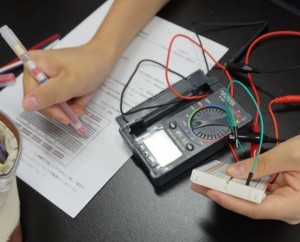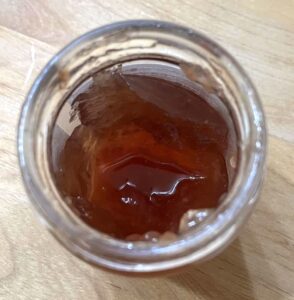Static Magic: Why Your Soap Bubble Dances to the Beat of a Charged Balloon
I’m Ken Kuwako, your Science Trainer! Every Day is an Experiment.
Soap bubbles float gently through the air. Usually, they drift wherever the wind and gravity take them, but what do you think would happen if we brought that “invisible force” closer? That’s right, the same force that makes your hair stand on end or gives you a zap when you take off a sweater: static electricity. Normally, a bubble is just at the mercy of the breeze, but how would its movement change if static electricity came into play? Will the bubble react just like your hair does when you rub it with a plastic ruler? Just imagining it is exciting! So, I tried the experiment!
What You’ll Need
- A Balloon
- A Towel (wool or cotton works best)
- Soap bubbles
MethodGather your supplies, and first, rub the balloon vigorously with the towel to build up static electricity. Gently blow a soap bubble.
Gently blow a soap bubble.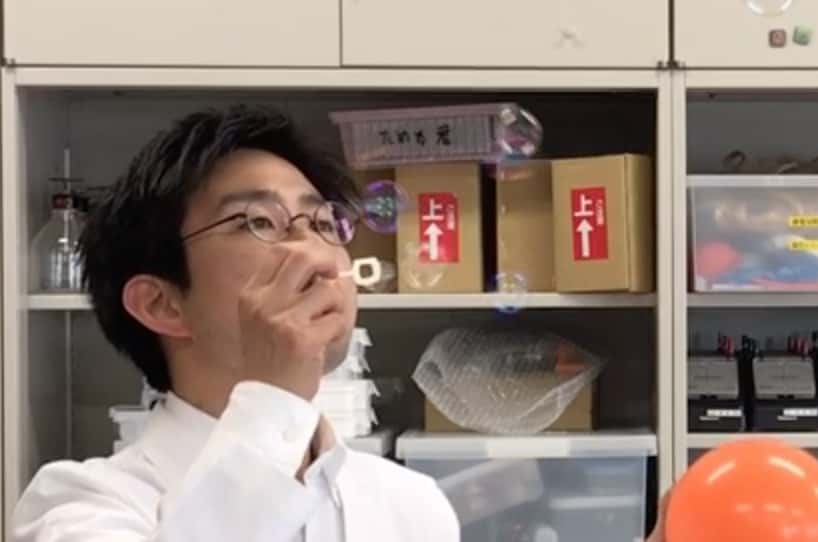 Bring the statically charged balloon close to the floating bubble.
Bring the statically charged balloon close to the floating bubble. How did it go? Lo and behold!
How did it go? Lo and behold!
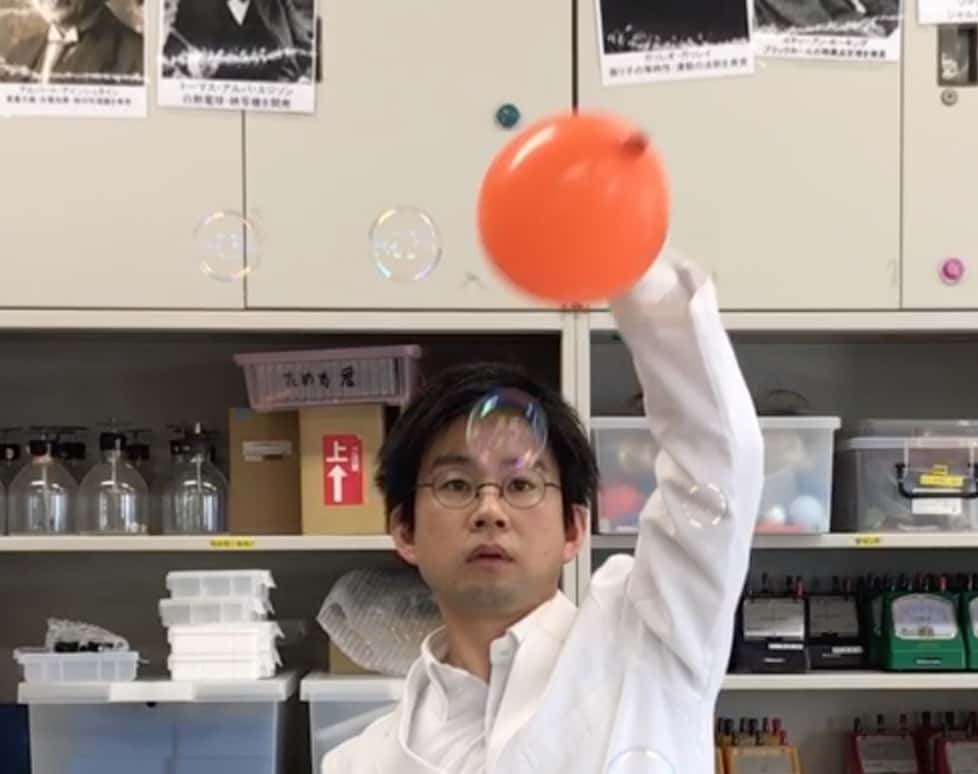 The soap bubble is gently pulled toward the balloon as if by magic.The “Repel” Experiment vs. The “Attract” ExperimentNow, let’s compare this to another experiment that uses static electricity: the “Static Butterfly” experiment.
The soap bubble is gently pulled toward the balloon as if by magic.The “Repel” Experiment vs. The “Attract” ExperimentNow, let’s compare this to another experiment that uses static electricity: the “Static Butterfly” experiment.
If you watch the video, the butterfly, made of tissue paper, flees from the statically charged object. The soap bubble is attracted, but the butterfly repels… They move in completely opposite ways. Why do we see such a difference?The Mechanism: What Causes the Attraction?First, when you rub the balloon with the towel, static electricity is generated. Balloons (made of rubber or vinyl) typically gain electrons (negative charge) when rubbed with materials like cotton or wool, so the balloon becomes negatively charged (-). On the other hand, a soap bubble is made of soap and water. This “water” is the key to the secret. A water molecule ($H_2O$) has a slightly peculiar shape. While the molecule is electrically neutral overall (neither positive nor negative), within the molecule, the oxygen (O) side carries a slight negative (-) charge, and the hydrogen (H) side carries a slight positive (+) charge. This is called having polarity. As shown in the following video, water reacts to electricity.
So, what happens when you bring the negatively charged (-) balloon close? That’s right! The positive (+) side (the hydrogen side) of the water molecules is attracted to the balloon’s negative charge, causing the molecules to reorient themselves toward the balloon.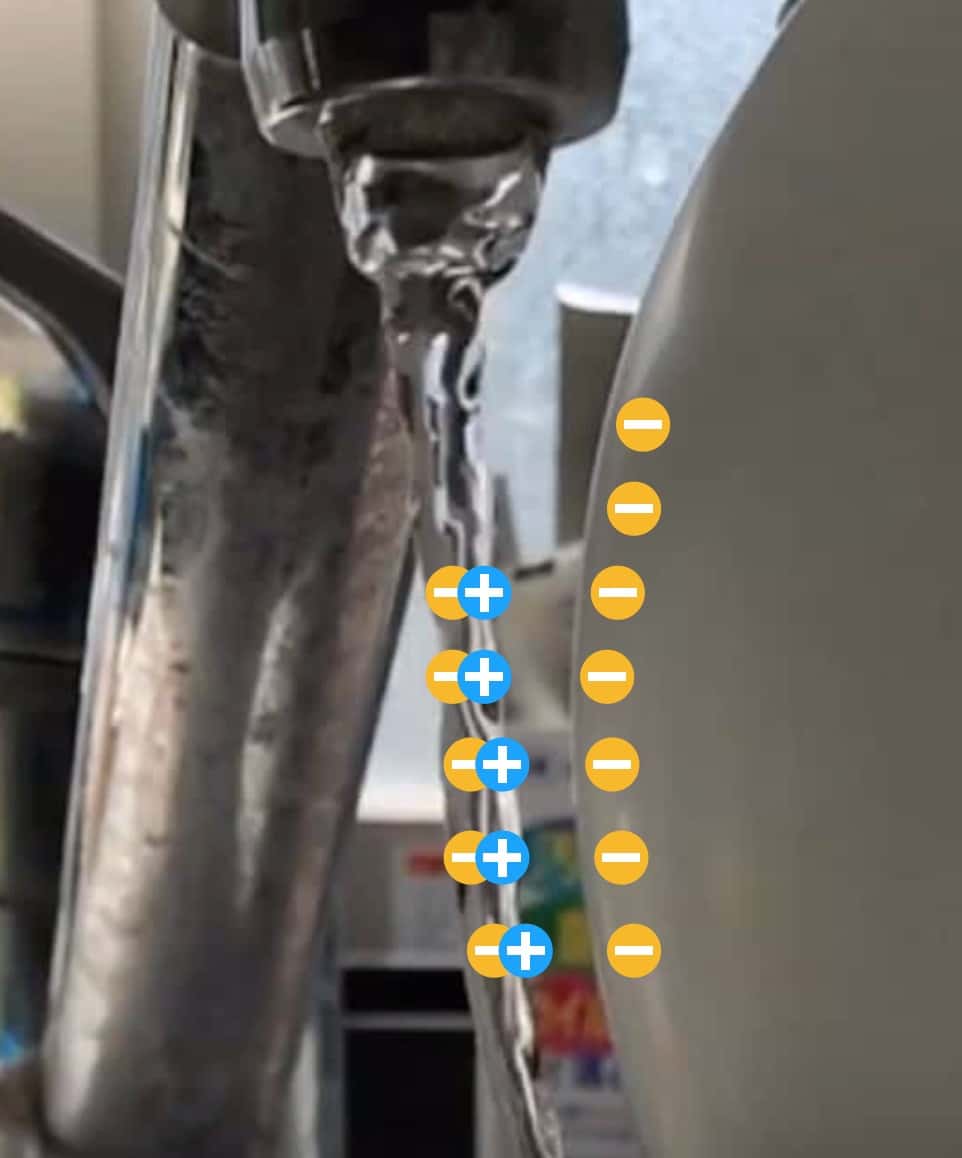 (Note: This diagram shows the example of bringing a positive charge close. When approaching with a negative balloon, the positive side of the water molecule is attracted.)Positive charges gather (or rather, molecules align) on the side of the soap bubble closer to the balloon, and negative charges on the side further away.
(Note: This diagram shows the example of bringing a positive charge close. When approaching with a negative balloon, the positive side of the water molecule is attracted.)Positive charges gather (or rather, molecules align) on the side of the soap bubble closer to the balloon, and negative charges on the side further away.
This phenomenon is called electrostatic induction (more precisely, dielectric polarization). Because the positive charge attracted to the balloon is slightly closer to the balloon than the repelled negative charge, the overall force of attraction is stronger. This explains why the soap bubble, which is supposed to be neutral, is drawn to the balloon.So, Why Does the “Static Butterfly” Fly Away?
This comes down to the difference in properties between the soap bubble (water) and the butterfly (paper). When the paper butterfly touches (or gets very close to) the statically charged object, electricity (electrons) jumps across, and the butterfly itself takes on the same (negative) charge as the balloon. Just like how like poles of a magnet repel each other (North and North, for example), like charges push each other away.
That’s why the butterfly “flees.” The soap bubble isn’t transferring charge; the water molecules are simply realigning to be attracted. Fascinating!More Exciting Experiments Using a Van de Graaff Generator!If you significantly boost the power of static electricity, you can perform even more dynamic experiments. We’ve published videos of other large-scale static electricity experiments, including some performed on a TV show with celebrities like Suzu Hirose, Ryohei Suzuki, Yasu-ko, and Osada and Matsuo of Chocolate Planet. Find out more here.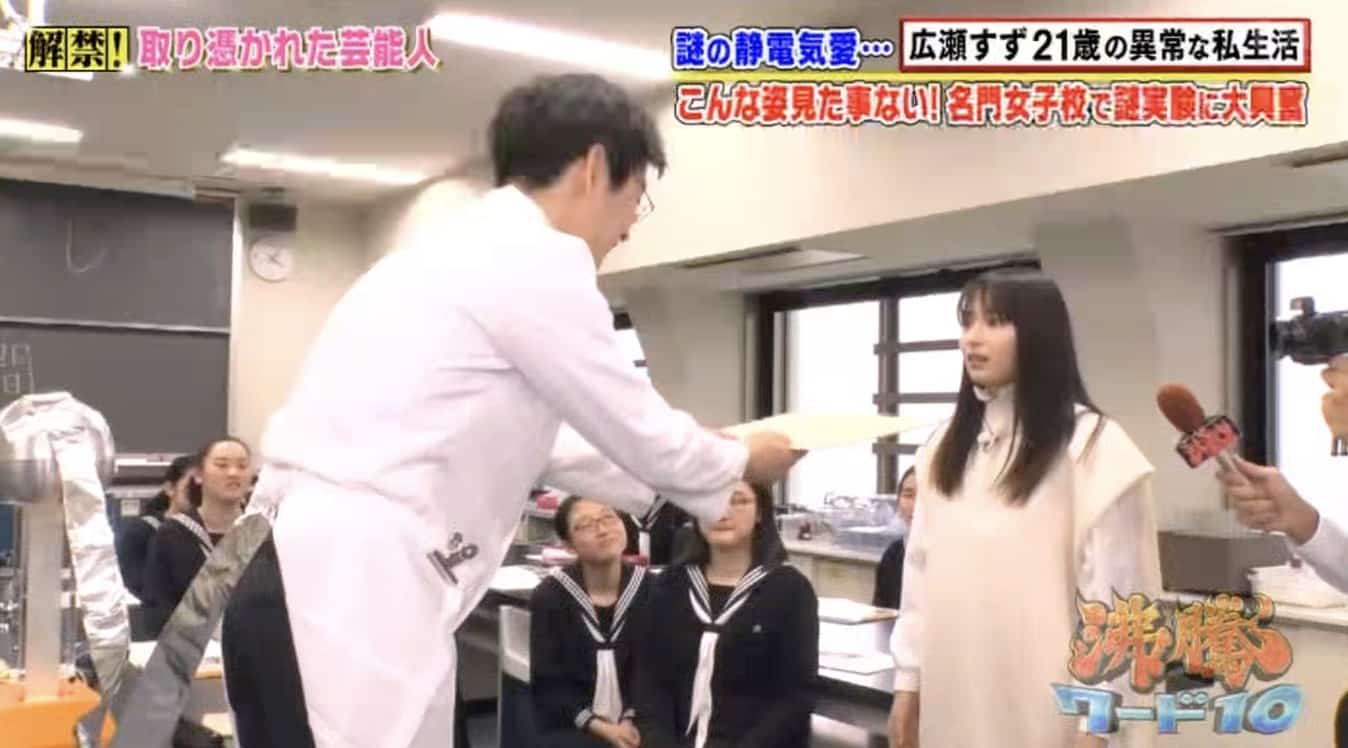 https://phys-edu.net/wp/?p=34632※ Please note that any experiments using a static electricity generator (Van de Graaff) must always be conducted under the supervision of a specialist. Please proceed with caution.For inquiries regarding static electricity experiments (workshops, TV supervision/appearances, etc.), please contact us here.
https://phys-edu.net/wp/?p=34632※ Please note that any experiments using a static electricity generator (Van de Graaff) must always be conducted under the supervision of a specialist. Please proceed with caution.For inquiries regarding static electricity experiments (workshops, TV supervision/appearances, etc.), please contact us here.
【Feature】You Can’t Stop Doing This! Static Electricity Experiments
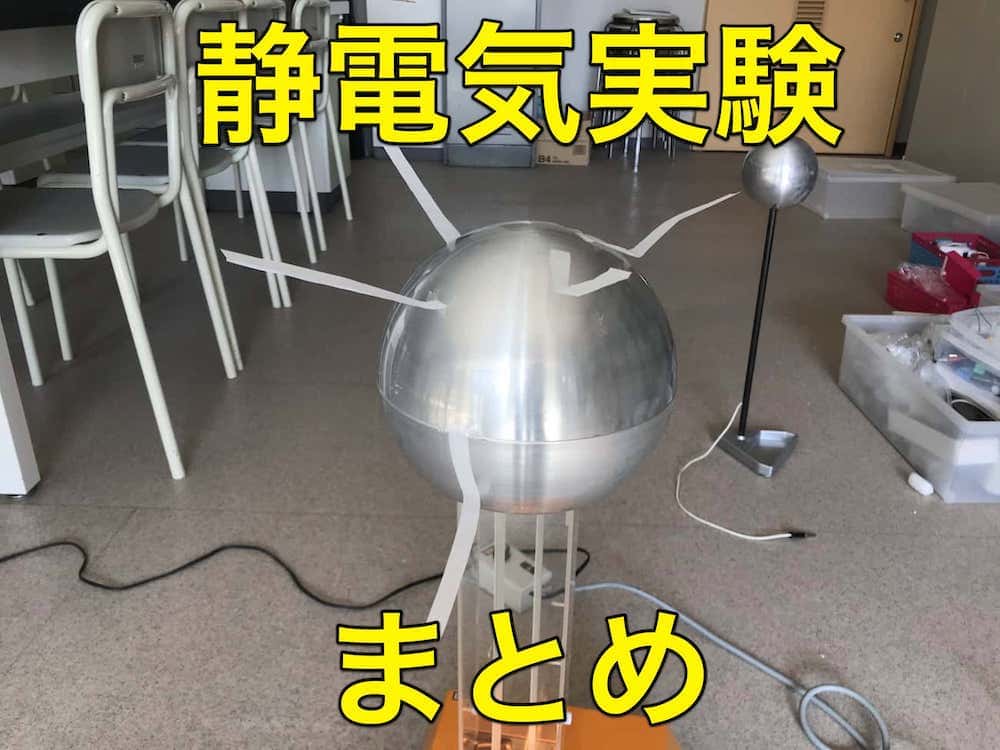 Contact and InquiriesBring the wonder and fun of science closer to home! We’ve put together easy-to-understand tips and fun science experiments you can do at home. Feel free to search around!The content from the Science Notebook has been turned into a book. Click here for details.For information about the operator, Ken Kuwako, click here.For various requests (writing, lectures, workshops, TV supervision/appearances, etc.), click here.– Article updates are posted on X!
Contact and InquiriesBring the wonder and fun of science closer to home! We’ve put together easy-to-understand tips and fun science experiments you can do at home. Feel free to search around!The content from the Science Notebook has been turned into a book. Click here for details.For information about the operator, Ken Kuwako, click here.For various requests (writing, lectures, workshops, TV supervision/appearances, etc.), click here.– Article updates are posted on X!
![]() We post experiment videos on the Science Notebook Channel!
We post experiment videos on the Science Notebook Channel!

